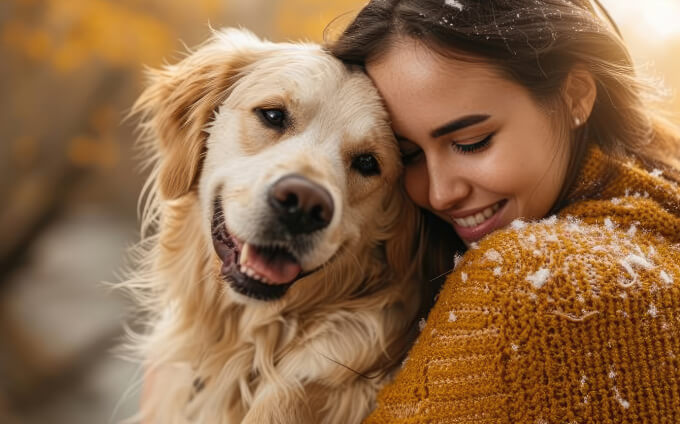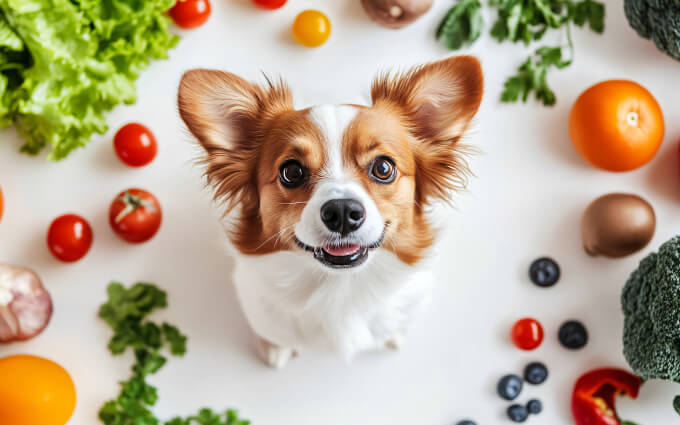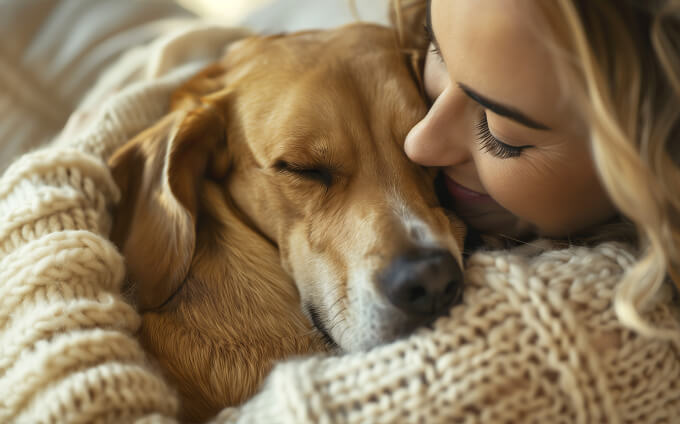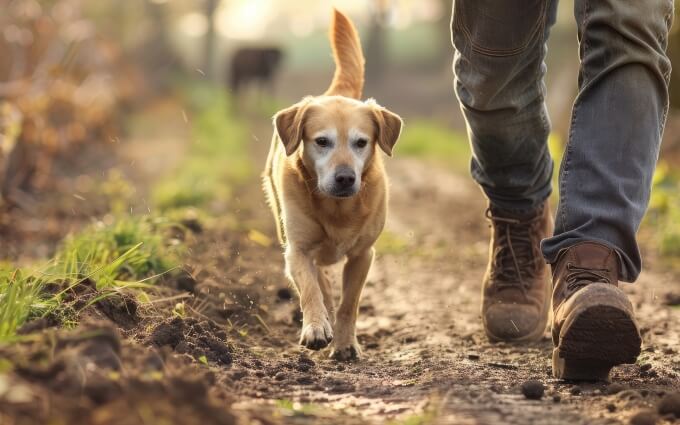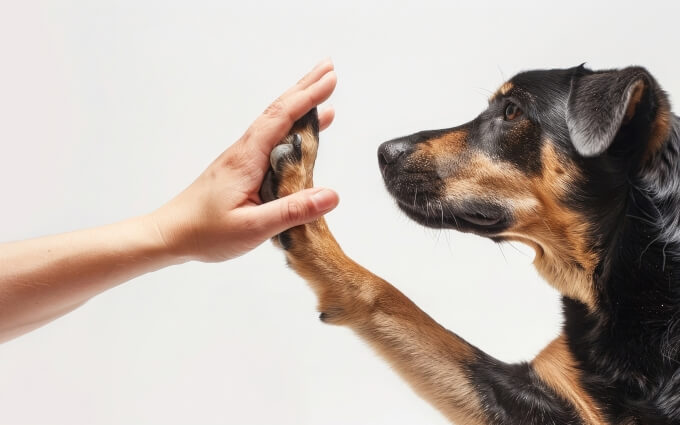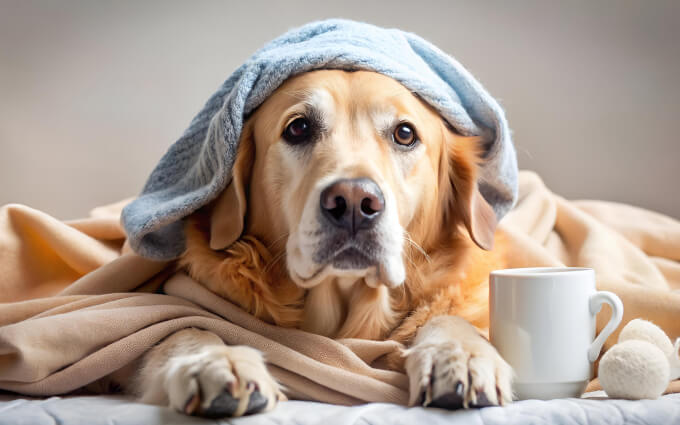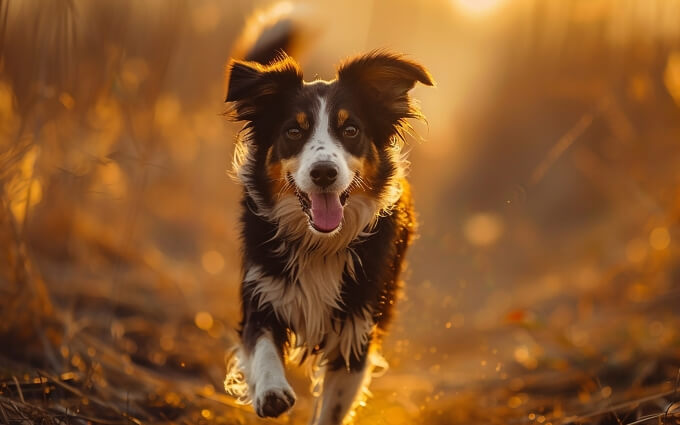- Home
- Dog Behavior
- How to Help a Shy or Nervous Dog Build Confidence
How to Help a Shy or Nervous Dog Build Confidence
Helping a shy or nervous dog build confidence takes time, patience, and the right techniques. With a structured approach, you can gradually encourage your dog to feel safe, secure, and ready to take on new challenges.

- 15
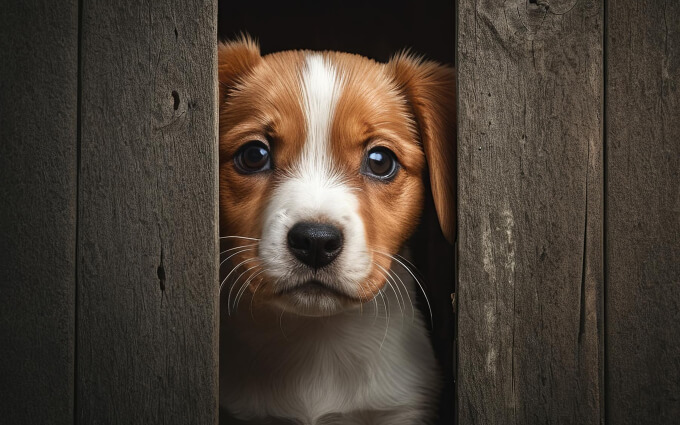
Understanding Your Dog's Shyness
First things first: it's important to recognize that shyness in dogs isn't a flaw, it's simply part of who they are. Just like people, some dogs are naturally more introverted or reserved. However, when this shyness stems from fear, past trauma, or poor socialization, it can impact their quality of life. Common signs of shyness include avoiding eye contact, trembling, hiding, or excessive yawning in stressful situations. To truly help your dog, start by acknowledging these signs and understanding where their fear comes from.
Common Causes of Shyness
- Inherited traits
- Lack of early socialization
- Trauma or negative experiences
- Medical conditions
Start with a Safe Space
Your home is your dog's sanctuary, and creating a safe, secure space is essential for building confidence. Whether it's a cozy corner or a crate, this space should be their retreat where they can relax and feel safe. Avoid forcing them out of their 'comfort zone' - they should have the freedom to explore on their terms. Give them a predictable routine, too, with consistent feeding, play, and quiet time, to help them feel more in control.
Make sure to keep chaotic environments to a minimum. Loud noises, bustling activity, or crowded spaces can overwhelm a shy dog. Slowly introduce new environments, but start from a place of calm and comfort.
Gradual Socialization: Baby Steps!
Socializing a shy dog is a slow process, but it's crucial to their confidence-building journey. Start by exposing them to new people, animals, and environments in a controlled and stress-free way. This gradual exposure process, known as desensitization, helps them learn that not all new situations are scary. For example, if your dog is scared of other dogs, begin with parallel walks with a calm, well-behaved dog at a distance, and gradually close that gap as your dog becomes more comfortable.
Tips for Gentle Socialization
- Start in low-traffic areas, like a quiet park corner or your backyard.
- Let your dog set the pace - never force them into interactions.
- Reward brave behavior with treats and praise.
- Introduce new friends one at a time, and keep the interactions positive.
Use Positive Reinforcement, Not Force
The best way to encourage your shy dog is through positive reinforcement. Rewarding good behavior with treats, praise, or play is an effective way to build confidence. The goal is to create a positive association with things that might otherwise cause stress, like meeting new people or trying new activities. Counter-conditioning, where you pair a stressful experience with a tasty treat, helps your dog learn that not everything unfamiliar is scary.
Be careful not to coddle your dog when they are scared, though. While it's important to comfort them, excessive babying can reinforce fear. Instead, calmly lead by example, showing them through your actions that there's nothing to be afraid of.
Focus on Basic Training
Basic obedience training is a fantastic confidence booster for any dog, but especially for shy or nervous ones. Commands like 'sit,' 'stay,' and 'come' can give your dog a sense of predictability and control. Make sure training sessions are short, fun, and reward-based. The more your dog masters, the more their confidence will grow.
Consider using toys and games to add some fun into the mix. Fetch, tug-of-war, or even food puzzles can help shy dogs tap into their natural instincts, forget their worries, and just be a dog for a while. Plus, the mental stimulation is great for their overall confidence.
Get a Confident Canine Role Model
Dogs learn a lot from watching other dogs. If your nervous pup has a confident dog buddy, let them spend some time together. When they see their friend calmly interacting with new people, playing confidently, or obeying commands, they're more likely to follow suit. If your dog doesn't have a canine buddy, you can also serve as their role model by staying calm and confident during stressful situations.
Just as important, remember not to rush your dog into these new situations. Every dog progresses at their own pace, and pushing them too quickly can backfire. The goal is to build trust and security one step at a time.
Celebrate the Small Wins
Building confidence in a shy dog is a journey. Celebrate the small victories - whether it's your dog approaching a new person without trembling, mastering a new command, or simply relaxing in a new environment. Progress may be slow, but every step forward is a win for your dog's confidence.
Stay patient, consistent, and positive. With time, your once-nervous dog will feel braver, happier, and more comfortable in their own skin.
Frequently Asked Questions about Helping Shy or Nervous Dogs
How can I help my shy dog gain confidence?
Use positive reinforcement, gradual exposure to new situations, and plenty of patience to build trust.
What causes dogs to be nervous or shy?
Shyness can come from genetics, lack of socialization, past trauma, or unfamiliar environments.
Are training classes good for nervous dogs?
Yes, gentle and supportive training classes can help shy dogs become more comfortable around people and other dogs.
Can toys and games help build my dog's confidence?
Yes, interactive play and puzzle toys encourage problem-solving and reduce anxiety.
When should I seek professional help for my nervous dog?
If fear or anxiety severely impacts daily life, consult a veterinarian or professional dog trainer.
- 15
 Michelle Torring
Michelle Torring
Michelle is a passionate dog owner who spends most of her free time with her 6-year-old golden retriever, Bella. The two are a familiar sight in the neighborhood, often seen on long walks in the park or at the beach. Michelle loves training Bella in agility and they often compete in local competitions where Bella impresses with her speed and agility. Every Sunday, Michelle organizes playdates for dogs in the neighborhood where both dogs and owners can socialize and learn from each other. To Michelle, Bella is not just a dog, but a beloved family member and faithful companion.
-
Dog health
 Which Emotions Do Dogs Actually Experience? Understanding Your Dog's Emotions
Which Emotions Do Dogs Actually Experience? Understanding Your Dog's EmotionsDogs experience a variety of basic emotions similar to those of a young child. Learn about the emotions your dog truly feels, how they express them, and what it means for your relationship.
 Cassandra DalgaardJul 30, 202478
Cassandra DalgaardJul 30, 202478 -
Food & Nutrition
 The Best Foods to Boost Your Dog's Immune System
The Best Foods to Boost Your Dog's Immune SystemTo keep your dog healthy and resilient, fueling their immune system with the right foods is key. In this post, we'll cover the top nutrient-packed foods that can give your dog's immune system the support it needs, helping them fend off illness and stay energetic.
 Marcin SolgaardOct 04, 20249
Marcin SolgaardOct 04, 20249 -
Dog Behavior
 Why Do Dogs Yawn So Much?
Why Do Dogs Yawn So Much?Whether it's stress, empathy, or simply tiredness, each yawn has a story to tell. Lets unpack the mystery behind why dogs yawn so much.
 Cassandra DalgaardAug 10, 202421
Cassandra DalgaardAug 10, 202421 -
Dog Behavior
 Does My Dog Know I Care About It?
Does My Dog Know I Care About It?Discover the ways your dog shows it knows you care and how you can reinforce that loving bond through simple actions and daily interactions.
 Cassandra DalgaardAug 05, 202444
Cassandra DalgaardAug 05, 202444 -
Tips & Tricks
 How to Train Your Dog to Walk Off-Leash
How to Train Your Dog to Walk Off-LeashThis guide will walk you through everything you need to know, from essential commands to mastering off-leash walks even in distracting environments
 Marcin SolgaardJul 02, 202451
Marcin SolgaardJul 02, 202451 -
Dog Behavior
 How Much Does a Dog Sleep? Understanding Your Pup's Snooze Habits
How Much Does a Dog Sleep? Understanding Your Pup's Snooze HabitsLearn about the varying sleep needs of dogs based on age, breed, and other factors. Find out if your dog is getting enough rest and how to help them sleep better.
 Michelle TorringAug 02, 202436
Michelle TorringAug 02, 202436 -
Tips & Tricks
 How to Train Your Dog to Give Paw
How to Train Your Dog to Give PawTeaching your dog to give paw is a fun and rewarding experience that strengthens your bond. This guide walks you through the process with tips, tricks, and plenty of paw-sitive reinforcement.
 Marcin SolgaardApr 11, 202441
Marcin SolgaardApr 11, 202441 -
Food & Nutrition
 How to Choose the Right Diet for Your Allergic Dog
How to Choose the Right Diet for Your Allergic DogFind out how to select the perfect diet for your dog with allergies. Learn about elimination diets, hypoallergenic foods, and the best ingredients to keep your furry friend healthy and happy.
 Marcin SolgaardJun 09, 202427
Marcin SolgaardJun 09, 202427 -
Dog health
 Common Dog Health Issues Every Pet Owner Should Know
Common Dog Health Issues Every Pet Owner Should KnowIf you have a dog, staying informed about common health issues is essential. Knowing what signs to watch for can help keep your pup happy and healthy. From allergies to arthritis, this guide covers the key dog health problems every owner should be prepared for.
 Cassandra DalgaardSep 28, 202417
Cassandra DalgaardSep 28, 202417 -
Tips & Tricks
 How to Teach Your Dog to Come When Called
How to Teach Your Dog to Come When CalledThis guide walks you through the process, from selecting the right command to dealing with distractions, ensuring a strong recall every time.
 Marcin SolgaardJul 10, 202448
Marcin SolgaardJul 10, 202448

